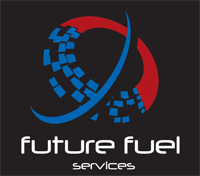An Overview of Fuel Oil Pipework and How to Design and Set It Up Properly
01 December 2022Petrol stations can refill the fuel needs of vehicle owners. They are also complemented by retail stores to ensure that people passing by can buy some food or necessary items for their trips.
But before petrol stations can carry out their purposes, they should be equipped with the right components first. Fuel tanks, for instance, must be designed, constructed, and installed optimally so they can store fuel without any issues. These tanks must then be fitted with pipework and other components to effectively transport the fuel from one place to another.
The piping system should be designed, constructed, installed, and repaired optimally to ensure that petrol stations can carry out their services.
Primary Materials for Pipework and Fittings
The materials used in creating the pipework system and its associated fitting can determine their overall effectiveness, longevity, and value. Without using the right materials, they may end up deteriorating very quickly, forcing petrol station owners to replace them unexpectedly.
One aspect of the materials that must be considered when constructing the pipework and fittings is their operating temperatures. They should be able to handle the surrounding temperatures so that they will not affect the condition of the fuel. Their resistance to specific temperatures may also help them last longer. Aside from the pipework, its fittings and valves should also boast materials that can handle varying temperatures. This quality makes sure that they can also last longer amidst being exposed to varying surrounding conditions.
Joints and Connections for the Pipework
When it comes to the design of joints and connections, they should be coupled with suitable lubricant or pipe compound, especially if they are threaded. They should also remain tight even when exposed to pressure.
For the joints and connections to be installed optimally, the pipe endings should be cut square, reamed, and chamfered. They must also be free from burrs and obstructions. They should likewise maximise full-bore openings. Proper allowance must then be present with the installation of joints and piping connections so that they can conveniently handle instances of vibration, contraction, expansion, and jarring.
Cleaning the joint surfaces, ultimately, is a must to ensure that they can be installed optimally. The installation of these things must be done based on the manufacturer’s instructions.
The Connection of Piping to Fuel Storage
Different piping must be installed to ensure that the fuel system can work optimally. These pipes include supply piping, return piping, fill piping, and vent piping.
The supply piping must be connected to the top part of the fuel storage tank. The same placement is done with the return piping. Fill piping, alternatively, must be placed outside of the facility. It intends to deliver the fuel into the storage tank with the help of a tight-fill connector. The vent piping, ultimately, allows the release of fuel vapours from the storage tanks. This piping ensures that the storage tanks will be safe from fires, explosions, and other damages.
To know more about proper fuel oil pipework, you can contact us at Future Fuel Services.
Optimized by: Netwizard SEO

